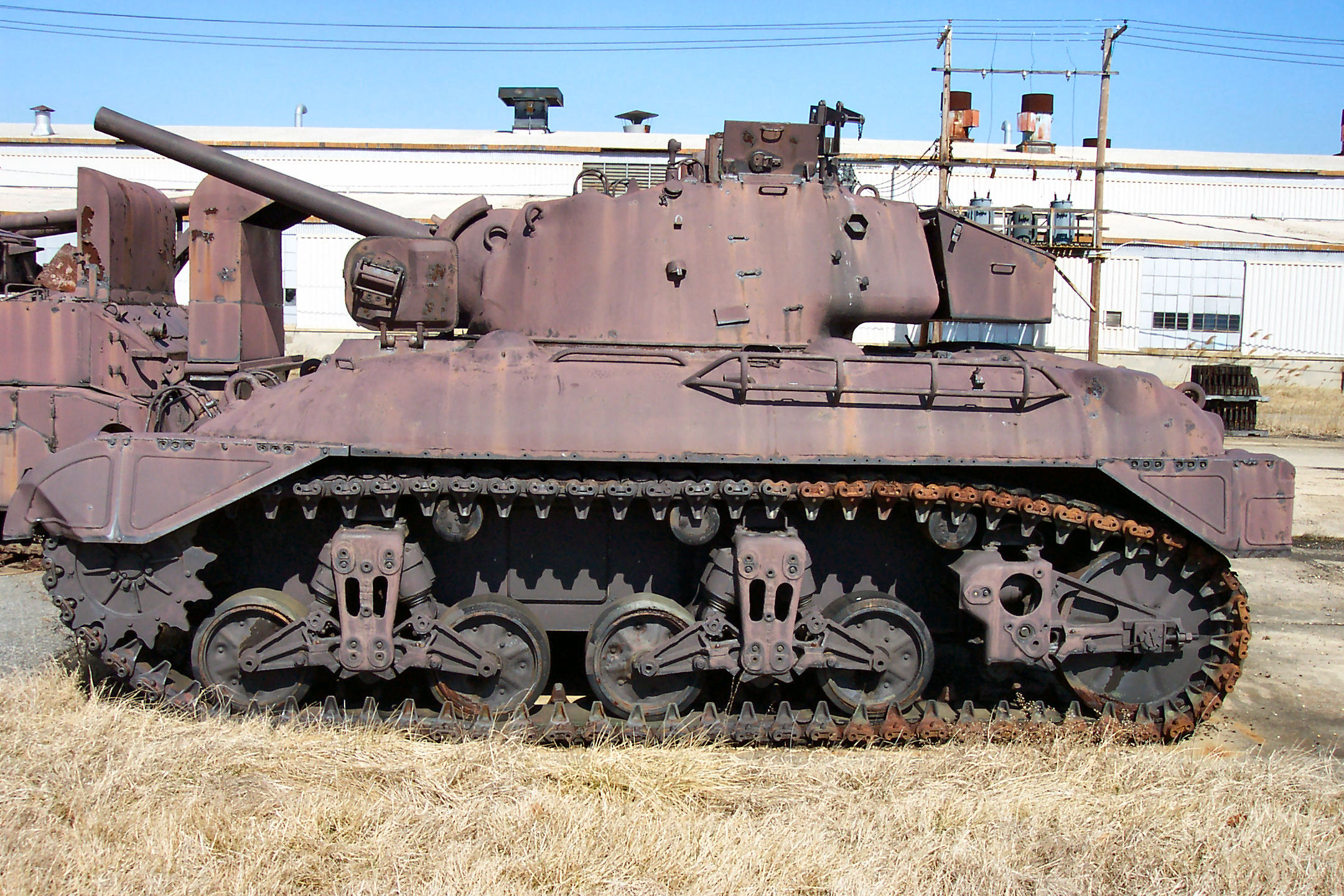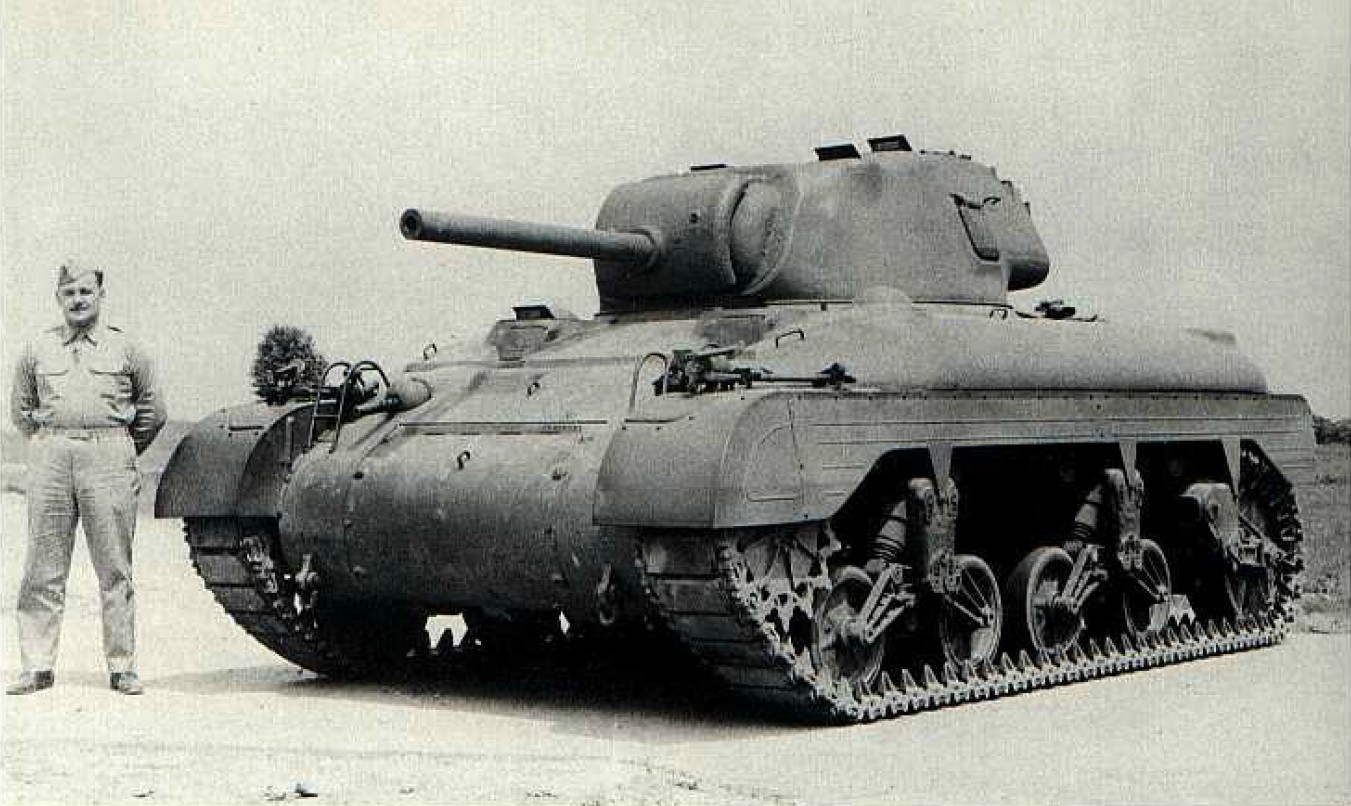1. The ground, to my mind, has never discussed the rationale behind the basic Churchill vehicle design from, a human ergonomics point of view. By any standard of functional man-machine interface the Churchill, in my judgement, like many a fighting machine on this forum, has not been addressed that way. Nor has its specifics, as virtues and deficiencies as to inside room to move about. hand things off among crew members (passing ammunition from the front carry boxes in the forward hull to the crew in the fighting compartment, as an example.), or the "turret monster", which is to say the basic inside "grab you and tear off an arm or leg" hazards inside the Churchill been shown as to be either a virtue or a hazard to the man-machine interface, nor has overall visibility, situational awareness, ease of gun feed or gun lay or engagement cycle time first round hit, been addressed in detail.
2. By 1. I mean the American understand this whole "ease of fightability of the system" concept. It is the British, whose reports I read, who do not seem to get the "Look, communicate, move, shoot, cycle". when it comes to anything remotely comparable to combined arms, even as a fighting unit. I even commented on that in some macros respects in posts; #16, #32, and #51 as to what I thought were the problems and the reasons why with the Churchill.
3. I am well aware of what system failure and success matrices are. If I am to judge by the Churchill's success, I would rate it as a decent mid-war British tank with a decent mechanical reliability and available for service upon contact with the enemy percentage rate, of about 80%. That is good. What I find substandard is what I have mentioned. It is not an easy tank to use as a fighting platform. It improves from Mark IV to Mark VII, but I flat out reject that it was ever as good as a Sherman as a tank.
4. Based on 3, how can I claim the Sherman was superior? Simple. The Sherman was several things the Churchill was not.
a. The Sherman was what the British would recognize as a "cruiser", or in American parlance "an exploitation tank"; that is a "cavalry or shock action" tank.
b. The Sherman mutated into just as many and as effective "funnies" as the Churchill and STILL could be used for its primary role as defined by a.
c. The Sherman chassis became the basis for tank destroyers, assault guns, self propelled artillery, kangaroos, armored engineer vehicles, Murphy knows how many field expedient hedgerow plows, bulldozers, mine clearers, and expedient engineer vehicles while still be able to flame throw, shoot and crunch stuff under its treads, depending on the Sherman.
d. The Churchill because of the way it was built and was intended to be used could be a "funny" but it lost its primary purpose in the process. It could not "tank" after it became a mine clearing vehicle or a wall breacher as easily as a Sherman. It was never intended to do so.
e. And besides, when the British tried for an early war replacement for a "main battle tank" or "universal" which they began to recognize as a tank role, that is what the Sherman defacto became, This actually is what the British army wanted... midwar.
f. They wanted a main battle tank. . a cruiser. Like the Sherman. Not the Churchill.
g. The point I made about the Black Prince was that it was an example of British tank designers being not clued in as to what the tank was supposed to do. It was in effect the British answer to the German Tiger I and it made about as little sense function wise.
h. For an infantry tank, that is close support of infantry, the Churchill Mark I to IV as a direct support platform could outclimb and it could cross terrain a Sherman tank could not. this is true. As a part of the British combined arms drill, that is look, understand, cooperate with artillery, infantry and airpower in the total matrix, no way in Murphy's hell, was it as good as a Sherman. Not even the Mark VII was as good in the ergo as to the situational awareness and communications department; and it sure was never as good as an overall expendable individual fighting platform. The Churchill fulfilled an infantry close assault specialist niche, and that it did fairly well, but the Wallies could have won without it. Not so without the Sherman tank. The Sherman disappears and something like it (T-23/M25 or even the M7 for example), has to replace it in the hole it leaves behind. A main battle tank (cruiser) has to be there for the Wallies, as the T-34 was for the Russians. Tanks are attritional inside the combined arms matrix. Survive long enough to do its job across the entire battle matrix.
i. Zu spät ist so gut wie nie. (Too late is almost never.)
j. The Americans understood infantry tanks and cavalry tanks. They legislated it into their national law in the 1920 National Defense Act. They even incompetently tried to build to it with a whole series tanks that were optimized for cavalry exploitation and infantry close assault roles. The M3 was the scout, the M6 was the American abortion that could be compared to the Churchill in mission role, and the M4 was the American "cruiser". Guess which two worked well?
k. Hard to say, that the Churchill was a result of enemy action. The British army did even not want it. They tried to KILL it in development.
l. One last comment on British attention to human ergonomics...
j.
The British did understand ergonomics. (At least the end-users were aware when they tested the things and wrote up
all the fail issues.). However when war happens and one needs a tank to do a job: one sends out a Grant/Lee or a Churchill Mark I to IV, and then fixes the bodges later. (Sherman and or Churchill VII).
McP.




